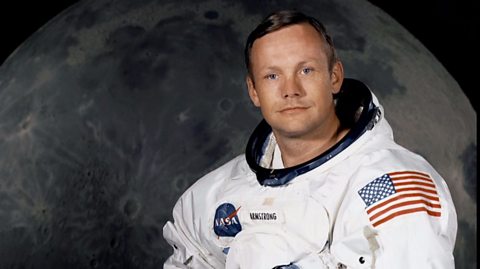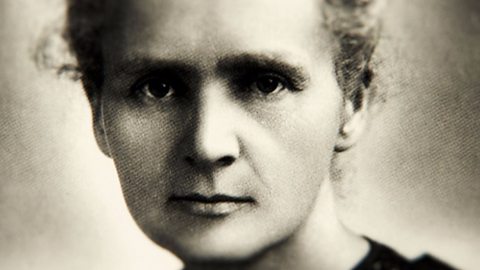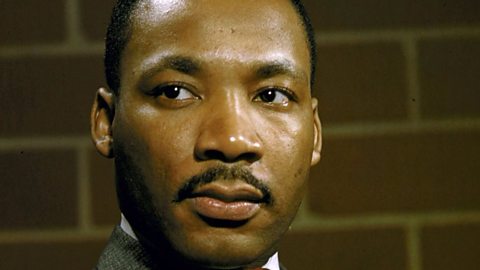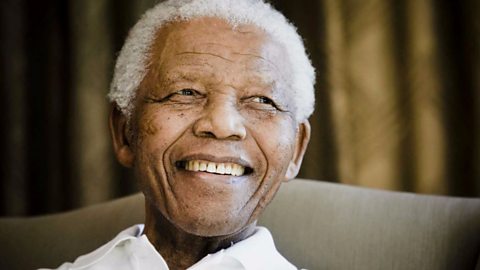SANJEEV BHASKAR: In the early part of the 20th century, Helen Keller was one of the most famous women in the world. She was an author, she was an Oscar winner, and she had the ear of presidents for over 60 years.
She loved coming to New York to experience the vibrations of the city. Helen Keller was both deaf and blind.
She was born in Alabama in the 1880s. And when she was just 18 months old, she contracted an illness that left her deaf and blind.
Ann Sullivan was a teacher hired by Helen’s parents.
Sullivan took Helen to a water pump and as the water went through her fingers, she spelled out the letters W, A, T, E, R, on her hand. And with that a door to a new world opened. That day she learned 30 words.
She would go on to learn not just the English language but French, German, Greek and Latin. And then she wanted to change the world. When Helen Keller was a child most deaf and blind children were sent to work houses or asylums, where no-one communicated with them, and they lived in a world of silence and darkness.
Helen Keller became one of the most vibrant activists for the rights of disabled people.
This is the American Foundation for the Blind, where the Keller archive is kept.
HELEN SELSDON: Being deaf and blind gave her a sort of an unusual platform from which to speak. She used it to assist those with disabilities, she did an extraordinary job of diligently working to change the lives of those with vision loss, from the time she was very young until the time she died. She worked for solidly six decades. She demanded that books be made available in Braille in libraries. That sounds obvious today but back then that was a huge deal, and she went to Congress she spoke on Capitol Hill and as a result of her speaking, the law was changed so that books would be made available.
SANJEEV BHASKAR: She just went straight to the top.
HELEN SELSDON: She just went straight to the top.
SANJEEV BHASKAR: Keller was a prolific and popular author. By her early fifties, her socially aware books had been published across the globe.
In 1933, Adolf Hitler is appointed Chancellor of Germany. The new regime acted not only against the liberty of its citizens, but against freedom of thought. It’s a testament to the power of Keller’s ideas that her books were amongst those burned by the Nazi’s.
Helen Keller realised the gravity of the situation and she wrote an open piece for the New York Times: 'You can burn my books and the books of the best minds in Europe, but the ideas in them have seeped through a million channels and will continue to quicken in other minds.'
As the horrors of the Second World War unfolded, Keller, a staunch pacifist, came to realise that the U.S. could not stand by as Nazi atrocities were committed. Eventually backing the war effort, she campaigned for America to accept all those fleeing fascism without exception. And she saw out the war visiting army hospitals, giving solace and hope to the wounded, and across the world her legend continued to grow.
Helen didn’t just want to fight for disabled people she wanted to take on all kinds of inequality including economic. Next, she wanted to narrow the divide between rich and poor.
KIM NIELSEN: She really believed that we needed justice and fair access to things like food and housing and healthcare and to her that was everything. And it infuriated her and angered her and disturbed her as a human being and as a U.S. citizen when those things were denied to people.
SANJEEV BHASKAR: She backed up her opinions with actions, setting up the American Civil Liberties Union, which to this day protects workers’ rights.
She campaigned across a whole range of fronts, writing on segregation, women’s suffrage, capitalism and class struggle. As she travelled the world her campaigning wasn’t just for her own cause but for everyone.
Helen Keller’s personal triumph was not allowing her disability to hold her back. It’s an against-all-odds story that tells us that there is no obstacle that can’t be overcome if we’re determined enough.
Sanjeev Bhaskar explains how deaf-blind writer Helen Keller was defined by what she could do.
In the early part of the 20th century she was one of the most famous women in the world - she was an author, she was an Oscar winner and she had the ear of presidents for over 60 years.
She was born in Alabama in the 1880s. And when she was just 18 months-old she contracted an illness that left her deaf and blind.
Her parents hired a teacher, Ann Sullivan, to help her communicate. Anne took Helen to a water pump and as the water splashed on her hands, she spelt W-A-T-E-R in her hand.
That day, Helen Keller learnt 30 words. She went on to learn not just English language but French, German, Greek and Latin.
She became an activist campaigning for the rights of disable people – she persuaded Congress to change the law so that books in braille would be made available in libraries.
She wrote many books on social issues, such as segregation, women’s suffrage, capitalism and class struggle that were published across the world.
When the Nazis were burning books, her books were deemed dangerous enough to be burnt. In the Second World War, she campaigned for all those fleeing Fascism to be accepted into America.
She spent the war visiting army hospitals to give solace to the wounded.
She wanted to campaign for all people’s rights and set up the American Civil Liberties Union which to this day protects worker’s rights.
She traveled the world her campaigning not just for her own cause but for everyone and her personal triumph was not allowing her disability to hold her back.
This short film is from the BBC series, Icons.
Teacher Notes
Key Stage 3 - History
This short film could be used to discuss:
- Key American figures in the 20th century
- Disability history
- American socialism
- The history of deafness and blindness
- Communications studies
- Pacifism
- Braille
Curriculum Notes
This short film is suitable for teaching history at KS3 in England, Wales and Northern Ireland and Third and Fourth Level in Scotland.

More from Icons:
Neil Armstrong - First person on the Moon. video
Dermot O’Leary explains how Neil Armstrong flew planes for the US in the Korean war and as a test pilot before he made history as the first person to walk on the Moon’s surface.

Marie Curie - The person who discovered radium and polonium. video
Chris Packham explains how Marie Curie’s discovery of polonium and radium changed atomic theory and how her study of radioactivity helped doctors save thousands of lives.

Dr Martin Luther King - American Civil Rights leader. video
Sanjeev Bhaskar finds out how Dr Martin Luther King advanced the Civil Rights movement in America through non-violent resistance.

Nelson Mandela - Freedom fighter and South Africa's first black president. video
Sir Trevor McDonald reports on Nelson Mandela, who went from freedom fighter to become South Africa’s first black president.
